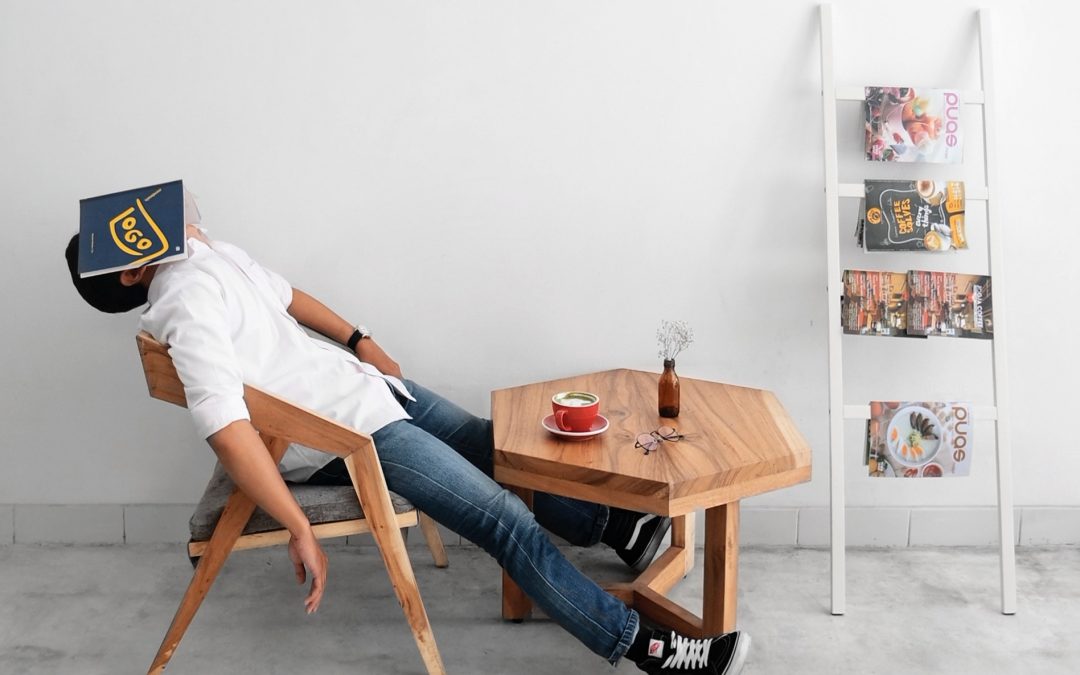Clementine Scott, 2017
In our fast-paced western society, there are countless reasons to stay up late – social occasions, that elusive chance to wind down from unendingly busy days, finishing off that to-do list or even an inability to fall asleep. Unfortunately, with the morning comes responsibility, and we begin again, often with an accumulation of sleep debt. The consequences of insufficient sleep have been well documented, and range widely from negative health impacts and increased morbidity to challenges to cognition and performance in regular daily tasks (Knowlden, Sharma & Bernard, 2012; Loft & Cameron, 2013). While the intention to go to bed earlier and sleep more is ever present, the desired behaviour change is unfortunately missing in action (Cassoff, Gruber, Sadikaj, Rushani & Knauper, 2014).
This phenomenon is all too familiar and quite obvious in the failed New Year’s resolutions, diets, and fitness regimes that most people experience at some time in life. Just what is it that prevents behaviour changes from occurring, when we know the benefits and we intend to make the change? This relationship between intention and behaviour has been widely studied and has become known as the intention-behaviour gap (Sheeran & Webb, 2016; Rhodes & Dickau, 2012).
Intentions comprise both goal and behavioural intention toward a specific outcome, as well as a person’s commitment to that outcome (Sheeran & Webb, 2016). Intentions are effective and necessary for reaching long-term goals and have been found to be reliable predictors of behaviour (Knowlden et al., 2012). While more research is needed to contribute to understanding the intention-behaviour gap, examining the sleep intentions and behaviours of various demographics has shed some light on the topic and provided some practical measures for strengthening intentions (Mairs & Mullan, 2015) and thus, the likelihood of behaviour change (Loft & Cameron, 2013).
Some research has linked intention to autonomy, which is a person’s sense of their own volition and choosing when engaging in a given activity (Cassoff et.al., 2014; Ryan & Deci, 2000). One study identified a potential negative impact of adolescent bedtimes set by parents on the young person’s sense of autonomy, and a consequent reduced intention to go to bed earlier (Cassoff et. al., 2014). While parental control is not applicable to the majority of the adult working population, autonomy is strongly linked with human motivation as an established psychological need and imperative for internalisation of behaviours (Takasu, Takenaka, Fujiwara & Toichi, 2012; Ryan & Deci, 2000), such as going to bed at a time that promotes a person having sufficient sleep. Externalised behaviours are associated with a lack of control and are often engaged in “because I have to”. Internalised behaviours are congruent with personal values and are satisfying to engage in (Ryan & Deci, 2000).
In addition to the need for autonomy in strengthening intentions, positive behavioural attitudes have been identified as a key component in mediating the behaviour-intention gap (Sheeran & Webb, 2016). Positive behavioural attitudes in this context are simply beliefs regarding the value of sufficient sleep (Cassoff et. al., 2014). In particular, research has found that people are more likely to act on intentions reflective of personal beliefs rather than social norms associated with pressure (Ryan & Deci, 2000; Knowlden et. al., 2012). This is consistent with the literature, which draws on the various theoretical frameworks surrounding attitude, motivation and behaviour, including the theory of planned behaviour (Knowlden et. al, 2012; Cassoff et. al., 2014) and self-determination theory (Ryan & Deci, 2000). Increasing knowledge of sleep hygiene and the benefits of sufficient sleep have been found to lead to greater intention for long-term behaviour change (Knowlden et. al., 2012).
More immediate results have been observed in studies utilising self-regulation techniques to improve sleep behaviours. Mental imagery is one particular method of self-regulation that has been used with effect. In one study, participants assigned to an implementation intention experimental condition were required to visualise a scenario of practising personal sleep hygiene in order to stimulate an if-then type cue. This was expressed as when one was in a particular place (ie home) at a particular time (half hour prior to the desired bedtime), to then ready for bed by engaging in relaxing activity. This visualisation was used to great effect in improving sleep behaviours (Loft & Cameron, 2013), consistent with findings supporting the use of cues to link intentions with behaviours and in supporting a one’s sense of autonomy and positive attitude toward the desired outcome (Mairs & Mullan, 2015; Schwarzer, 2008).
It has become apparent that insufficient sleep is commonly accepted and usually unchallenged. Perhaps this is due to outside pressures and a reluctance to take personal responsibility for life choices including our sleep behaviours (Loft & Cameron, 2013). The intention-behaviour gap has identified the need for autonomy, positive attitudes and self- regulation in order to change behaviour. Change is possible, but is it valued at a personal level? Chances are, your bedtime will tell.
References
Campbell, R., Vansteenkiste, M., Delesie, L.M., Mariman, A.N., Soenens, B., Tobback, E., Van der Kaap-Deeder, J., & Vogelaers, D.P. (2015). Examining the role of psychological need satisfaction in sleep: A self-determination theory perspective. Personality and Individual Differences, 77, 199-204.
Cassoff, J., Gruber, R., Sadikaj, G., Rushani, F., & Knäuper, B. (2014). What motivational and awareness variables are associated with adolescents’ intentions to go to bed earlier? Current Psychology, 33(2), 113-129.
Knowlden, A. P., Sharma, M., & Bernard, A. L. (2012). A theory of planned behavior research model for predicting the sleep intentions and behaviors of undergraduate college students. Journal of Primary Prevention, 33(1), 19-31.
Loft, M. H., PhD., & Cameron, L. D., PhD. (2013). Using mental imagery to deliver self-regulation techniques to improve sleep behaviors. Annals of Behavioral Medicine, 46(3), 260-72.
Mairs, L., & Mullan, B. (2015). Self-monitoring vs. implementation intentions: A comparison of behaviour change techniques to improve sleep hygiene and sleep outcomes in students. International Journal of Behavioral Medicine, 22(5), 635-644.
Rhodes, R. E., & Dickau, L. (2012). Experimental evidence for the intention–behavior relationship in the physical activity domain: A meta-analysis. Health Psychology, 31(6), 724-727.
Ryan, R. M., & Deci, E. L. (2000). Self-determination theory and the facilitation of intrinsic motivation, social development, and well-being. American Psychologist, 55, 68-78.
Schwarzer, R. (2008). Modeling health behavior change: How to predict and modify the adoption and maintenance of health behaviours. American Psychologist, 57, 1-29.
Sheeran, P. & Webb, T. L. (2016). The intention–behavior gap. Social and Personality Psychology Compass, 10(9), 503-518.
Takasu, N. N., Takenaka, Y., Fujiwara, M., & Toichi, M. (2012). Effects of regularizing sleep-wake schedules on daytime autonomic functions and psychological states in healthy university students with irregular sleep-wake habits. Sleep and Biological Rhythms, 10, 84-93.



Recent Comments